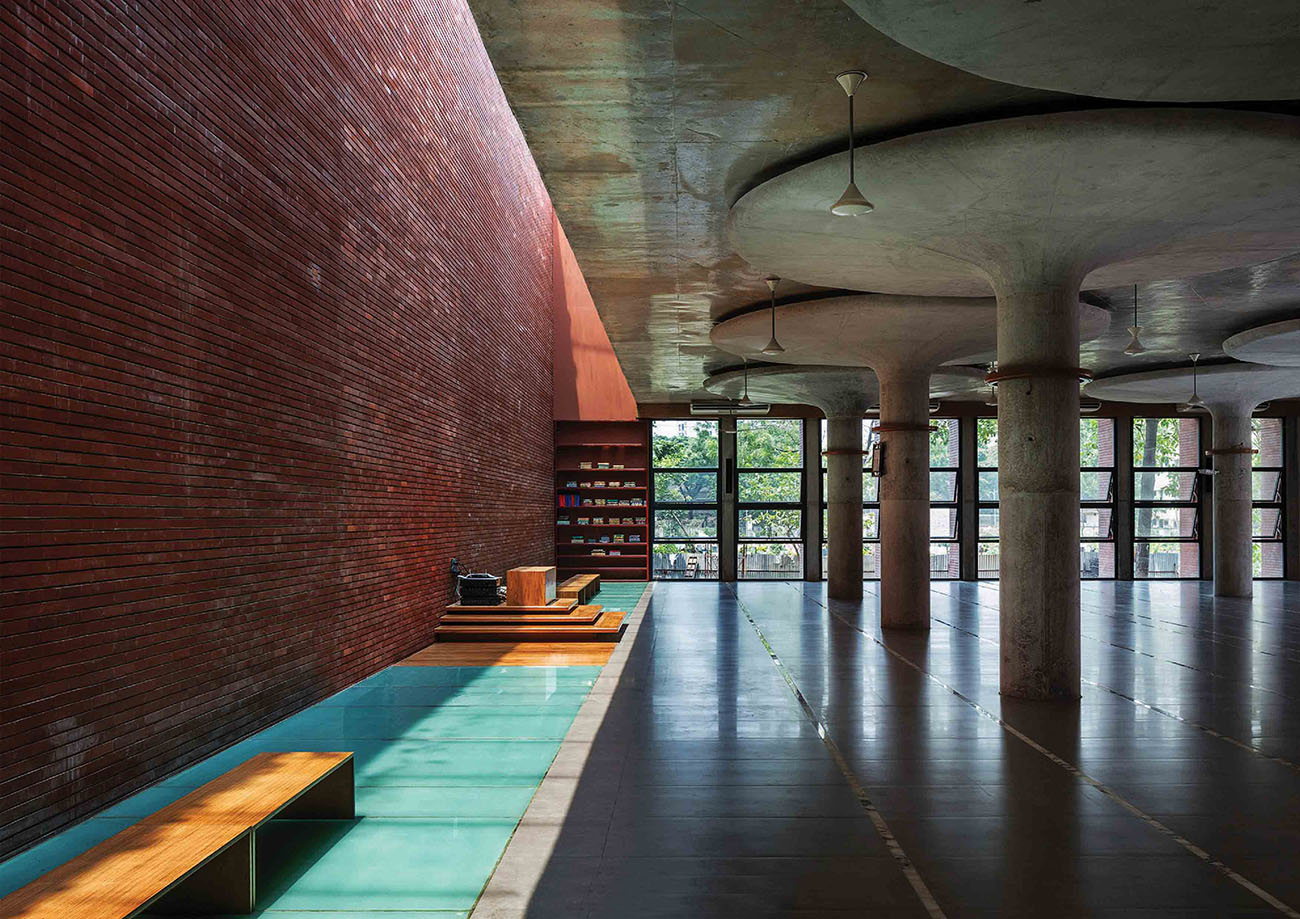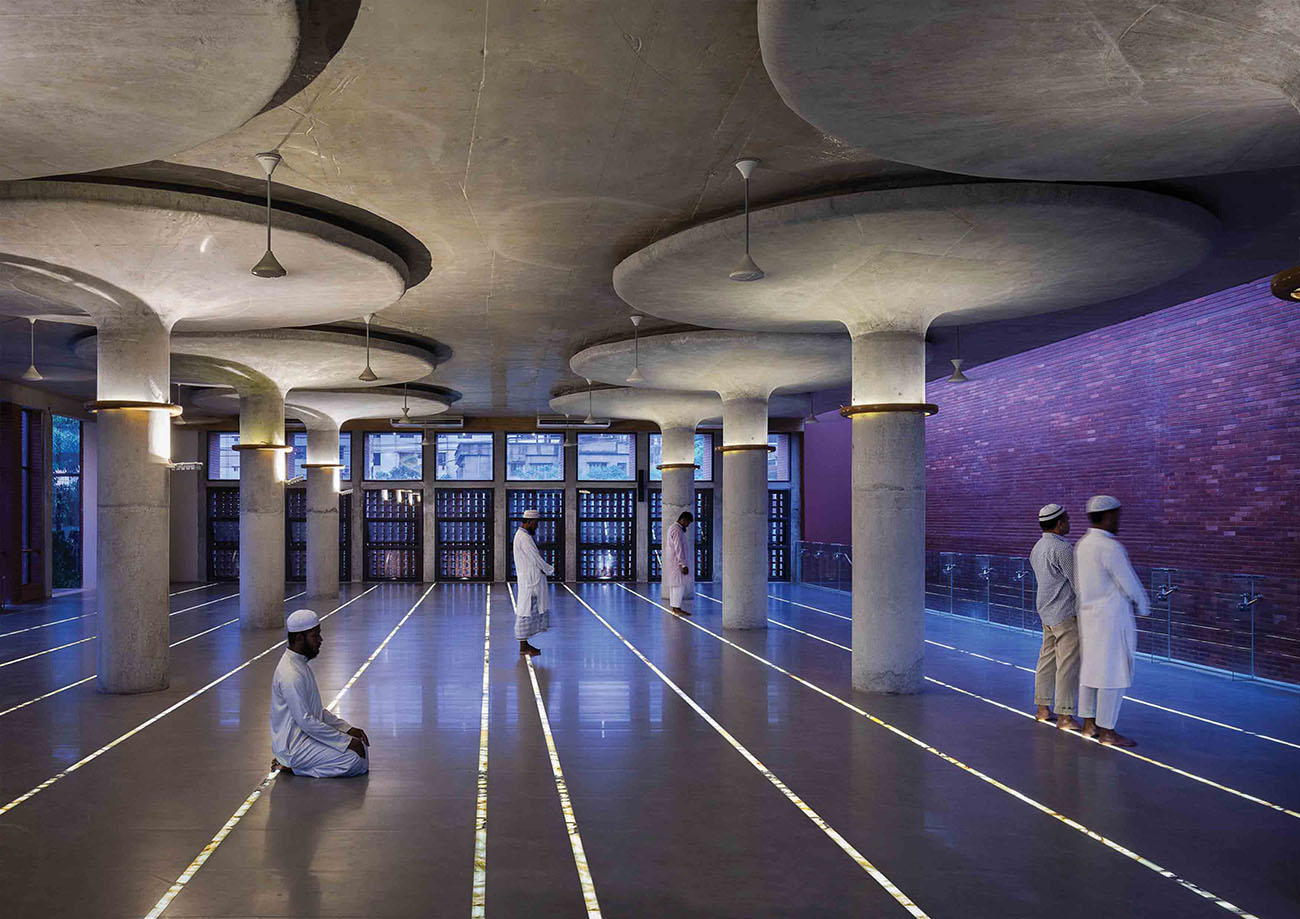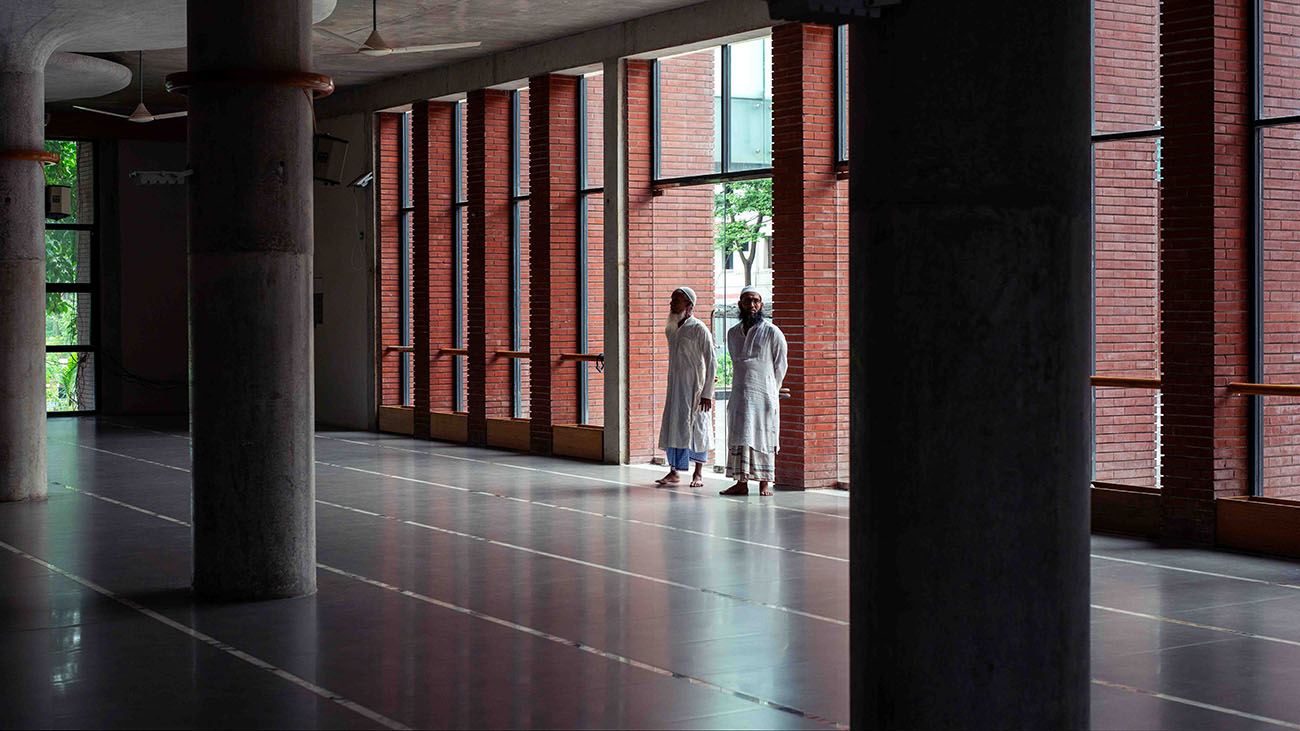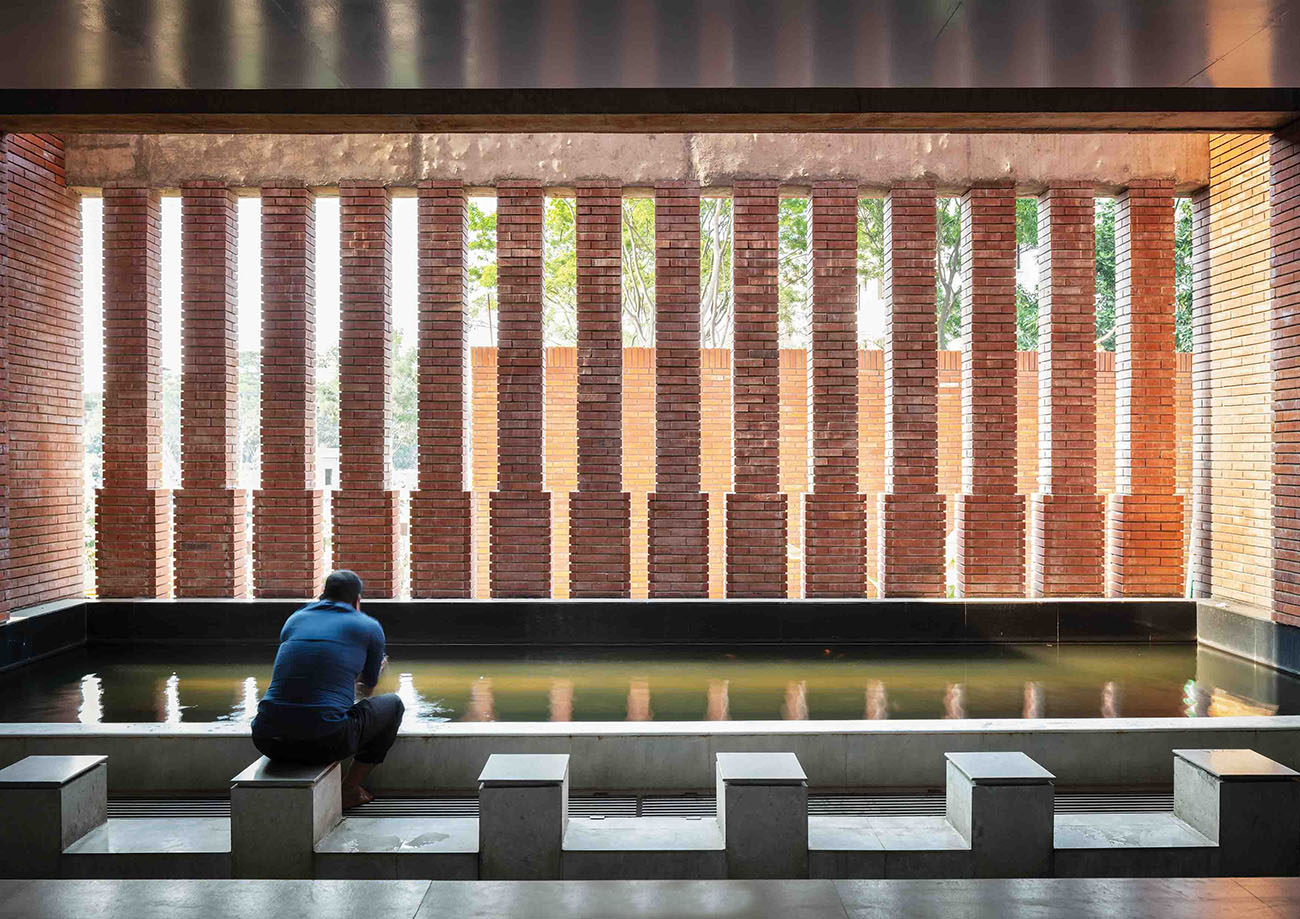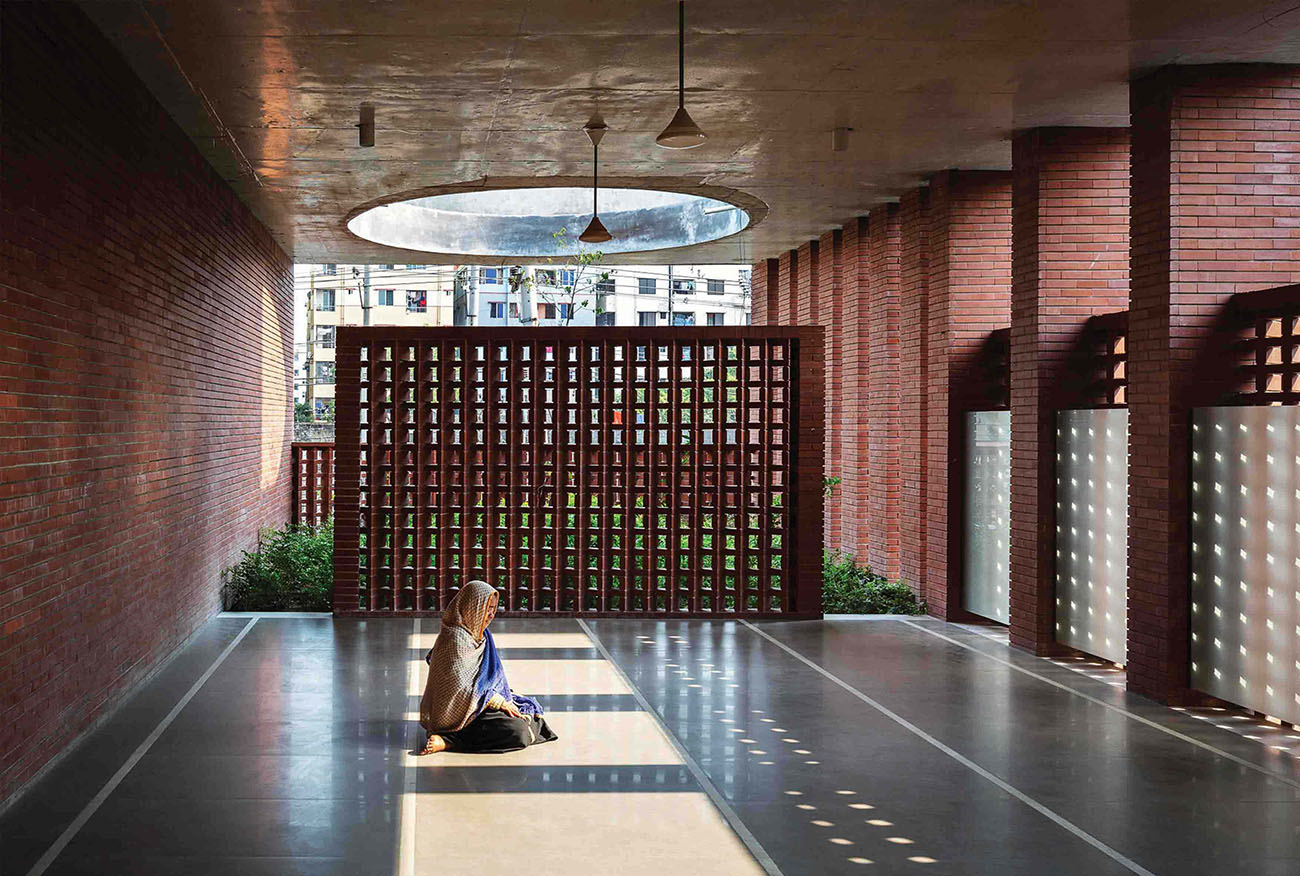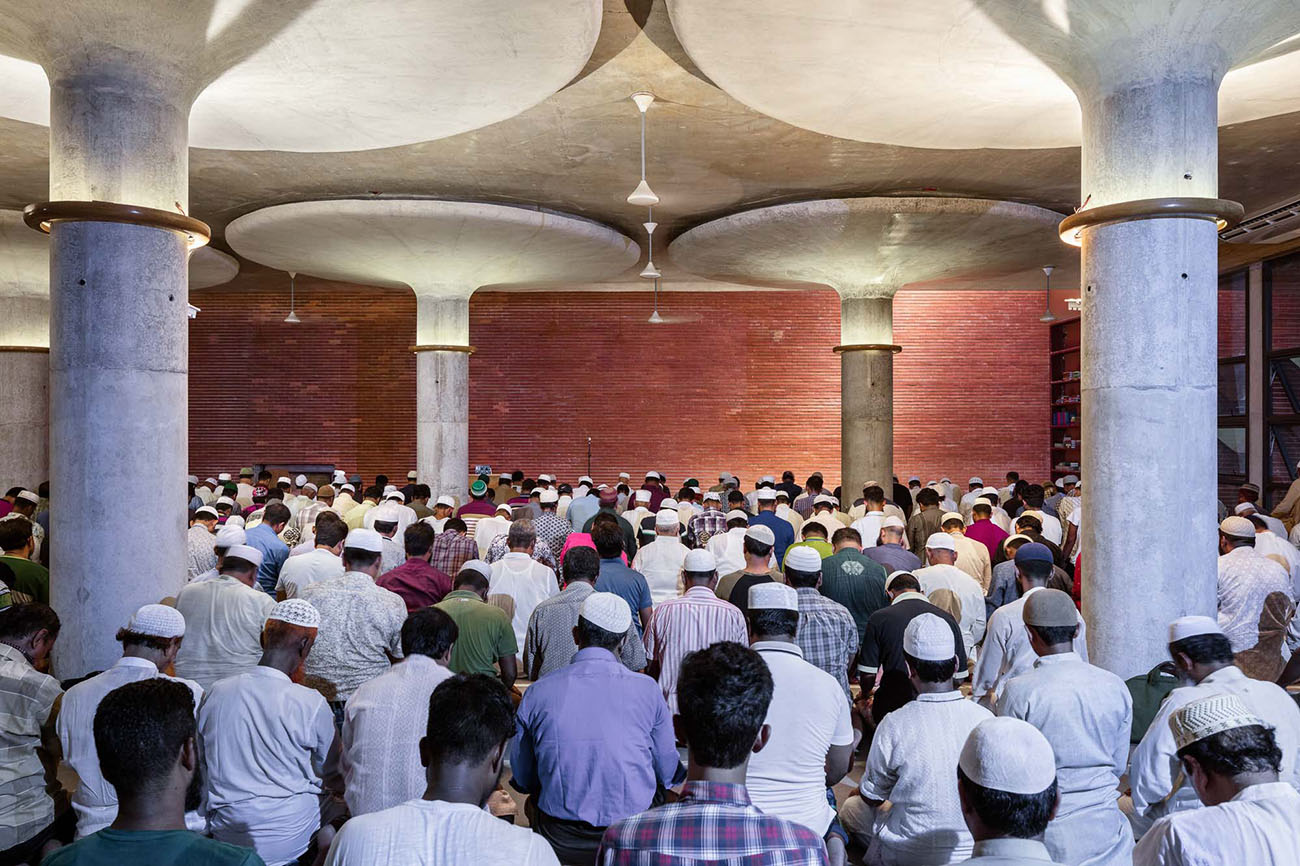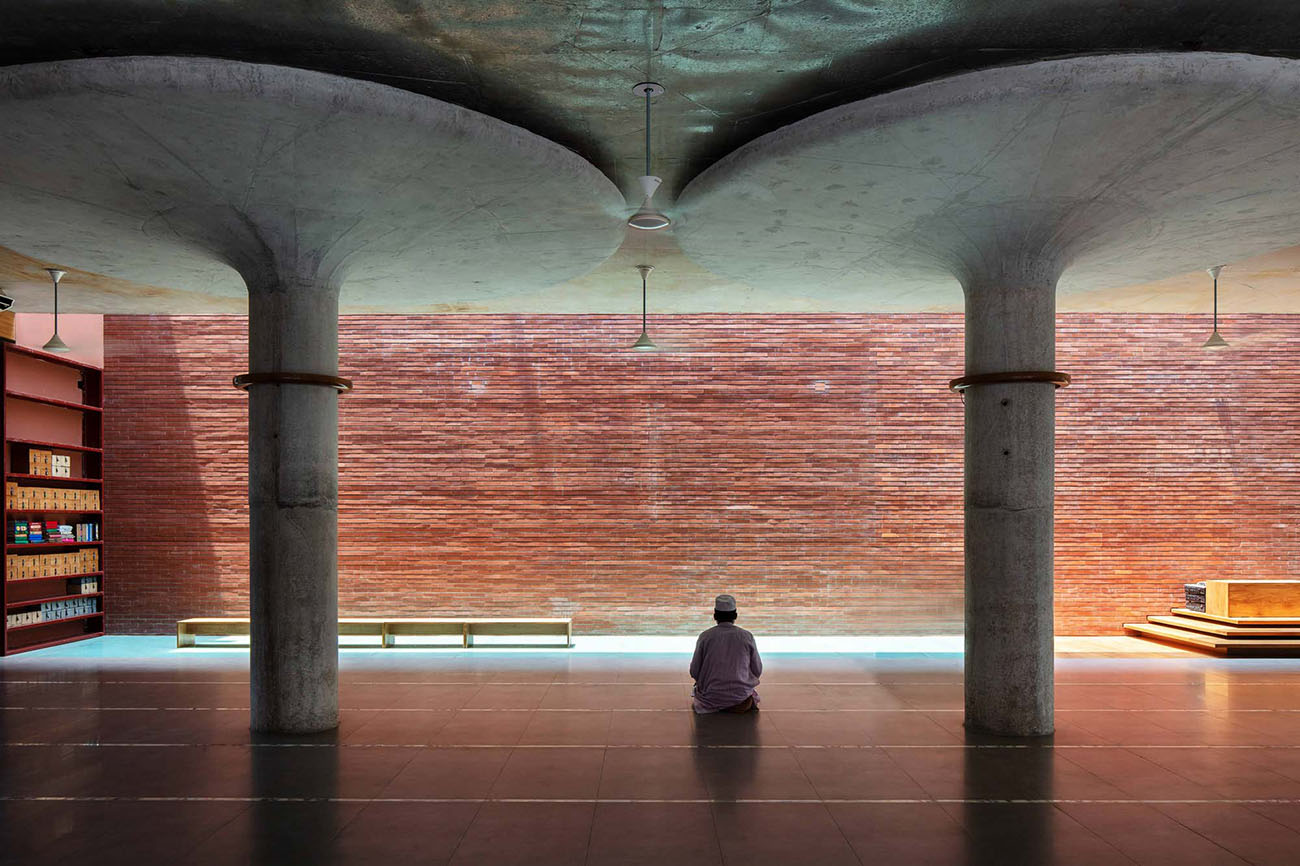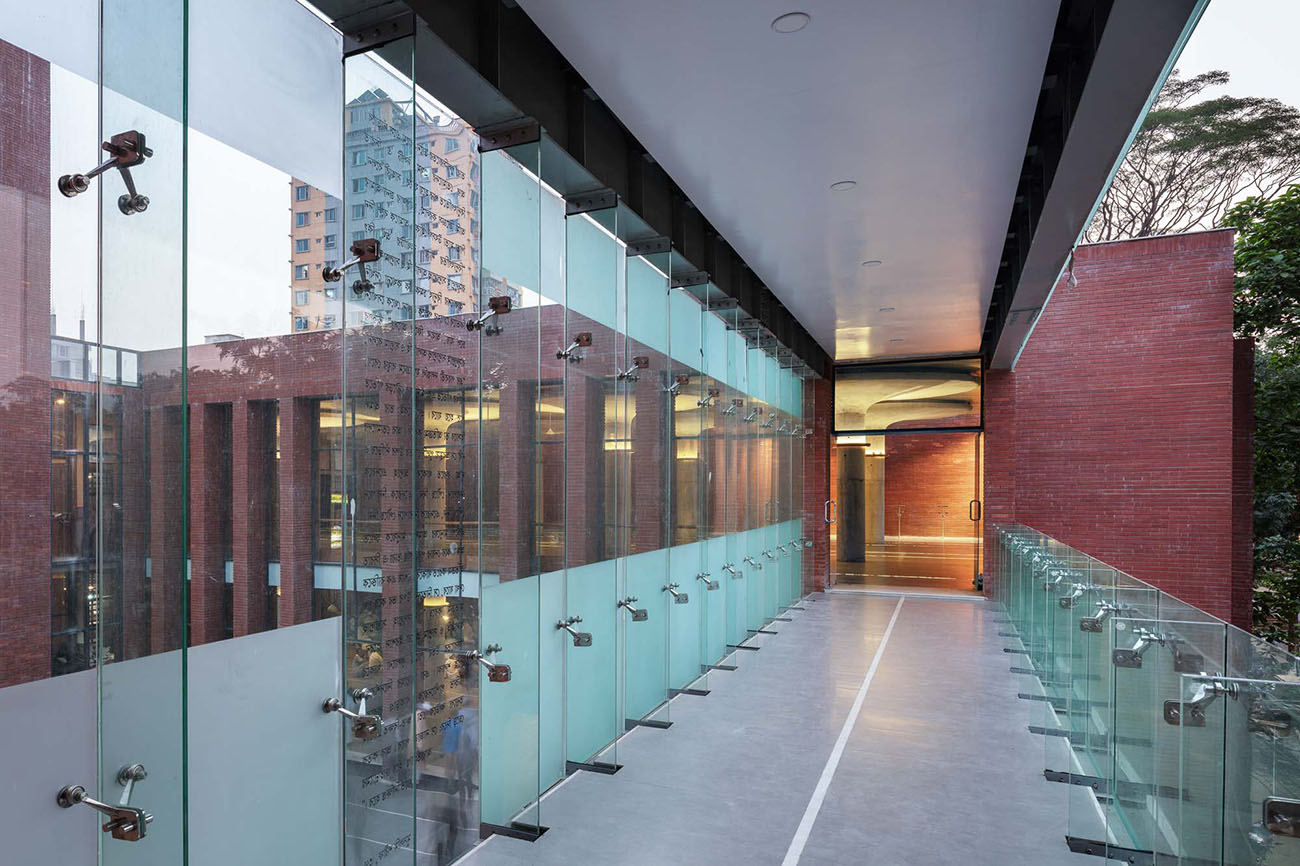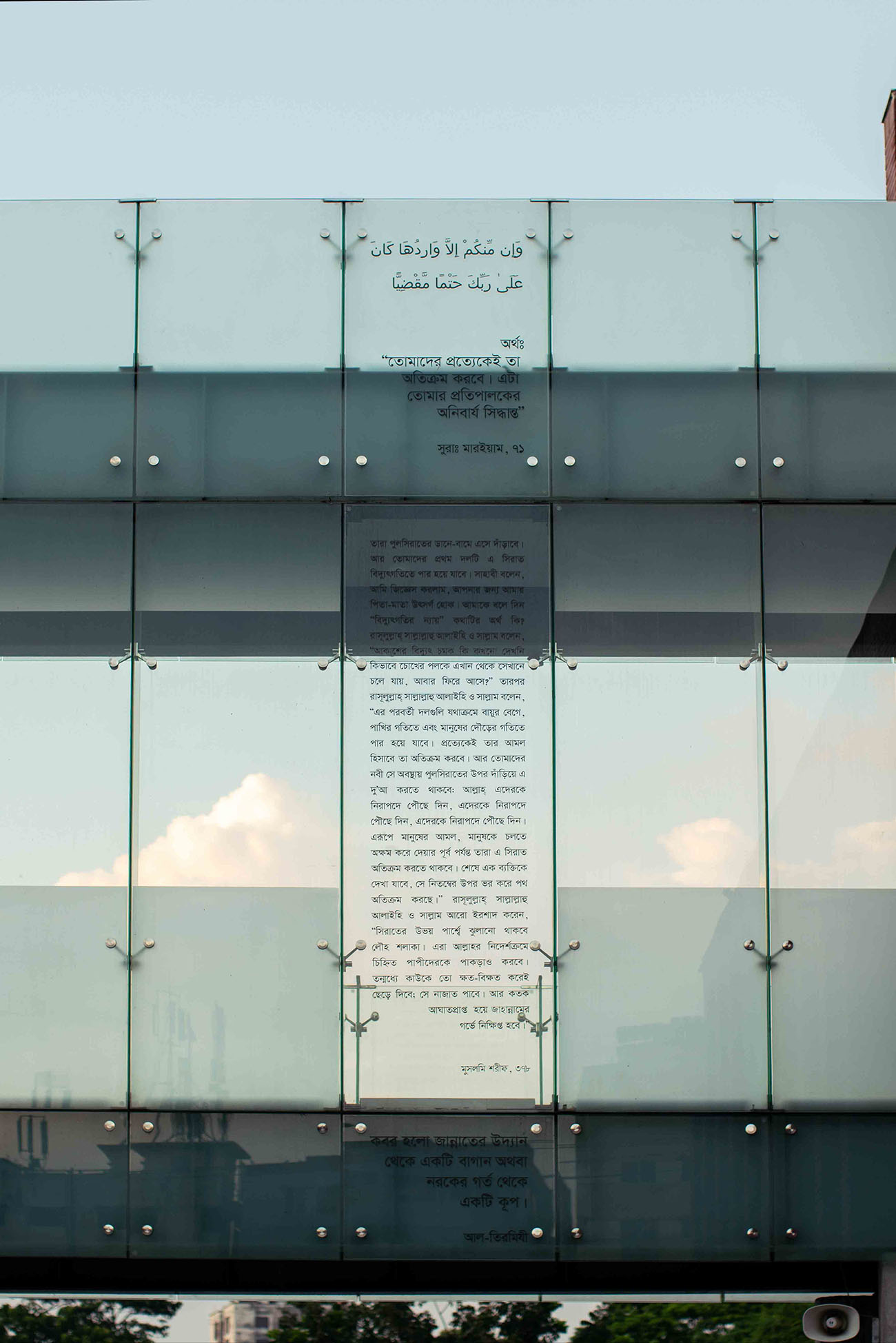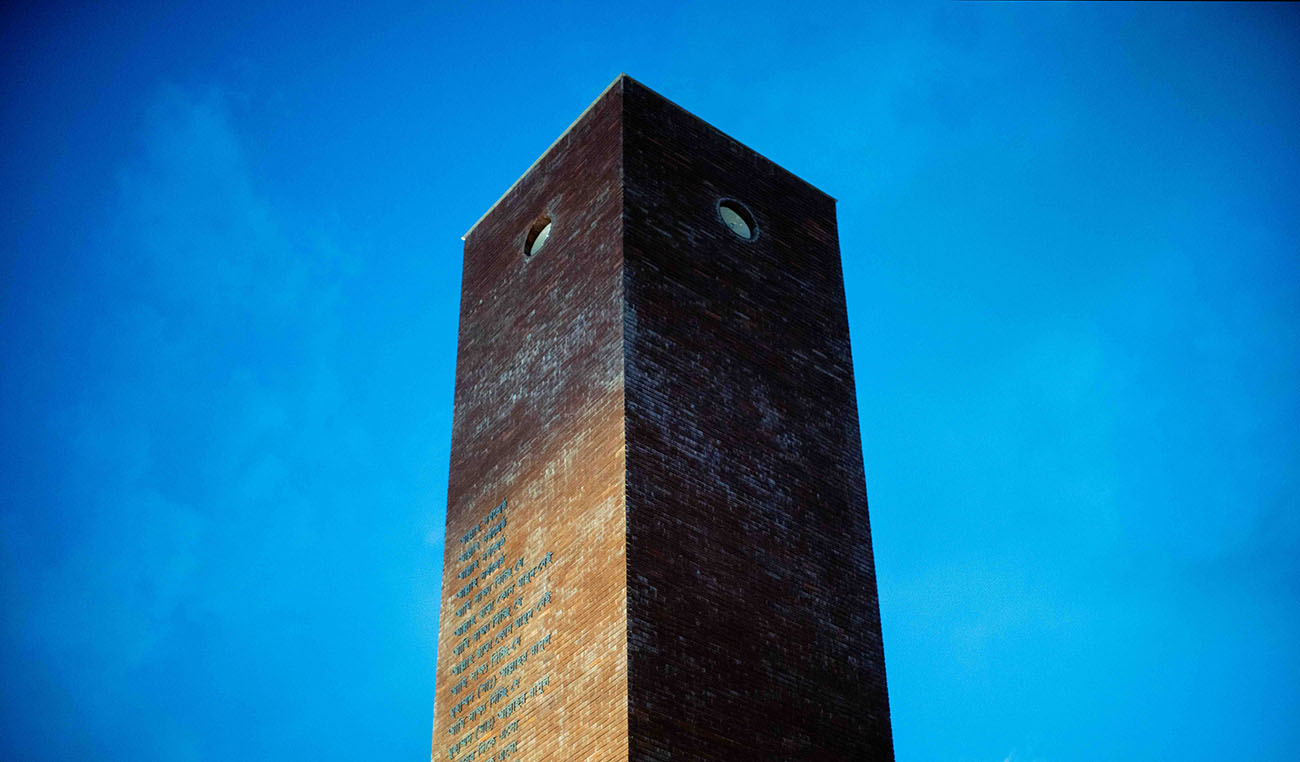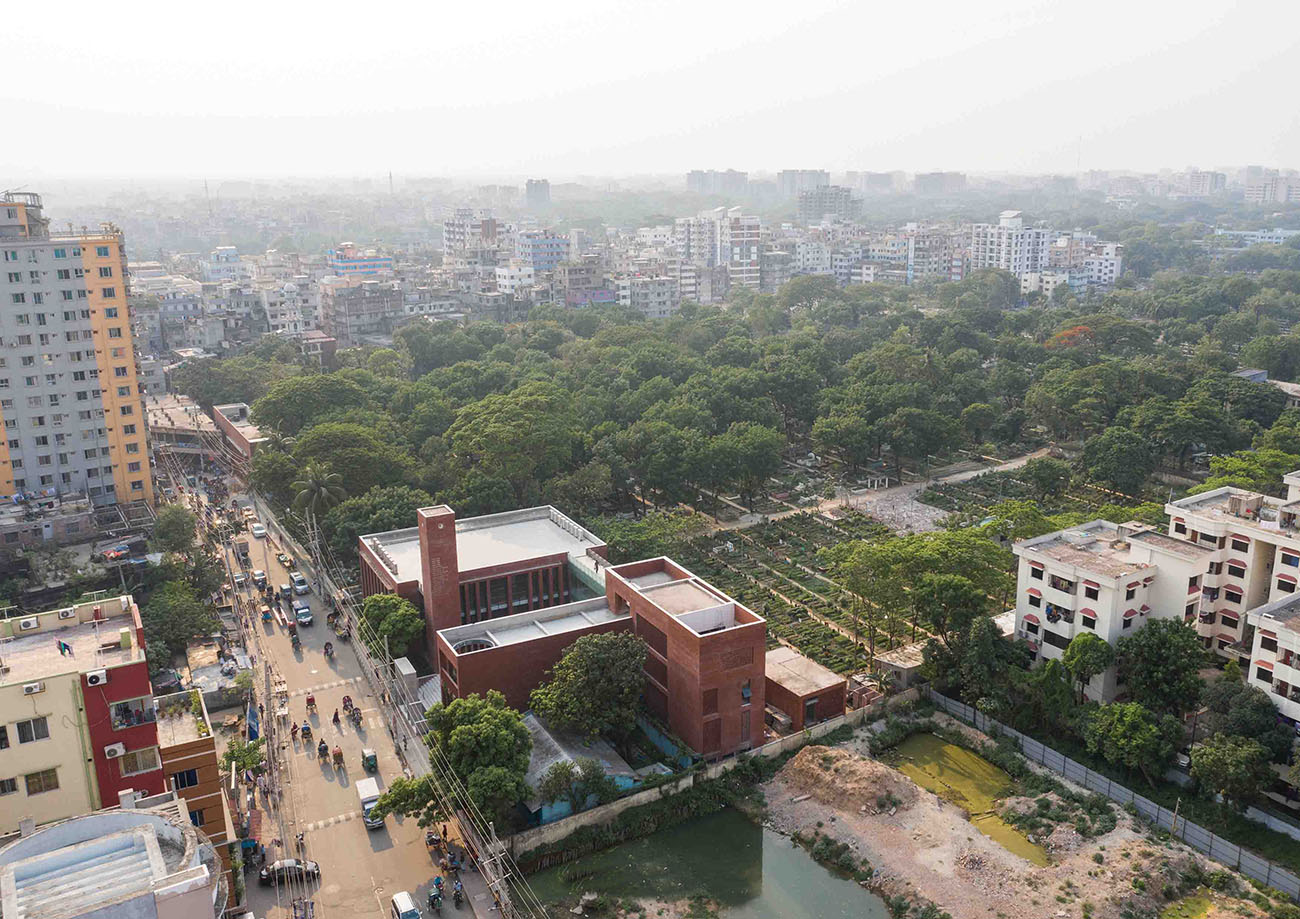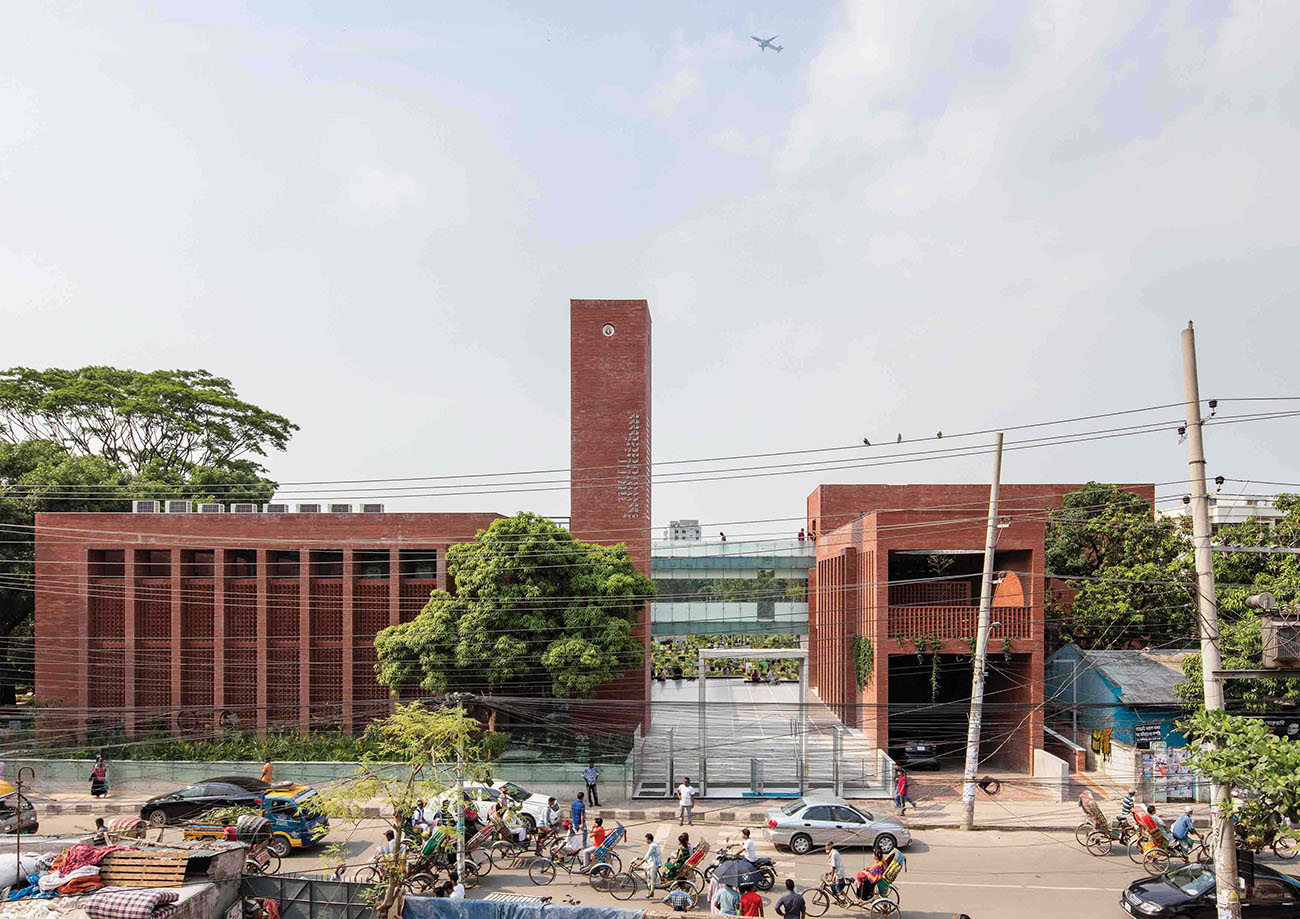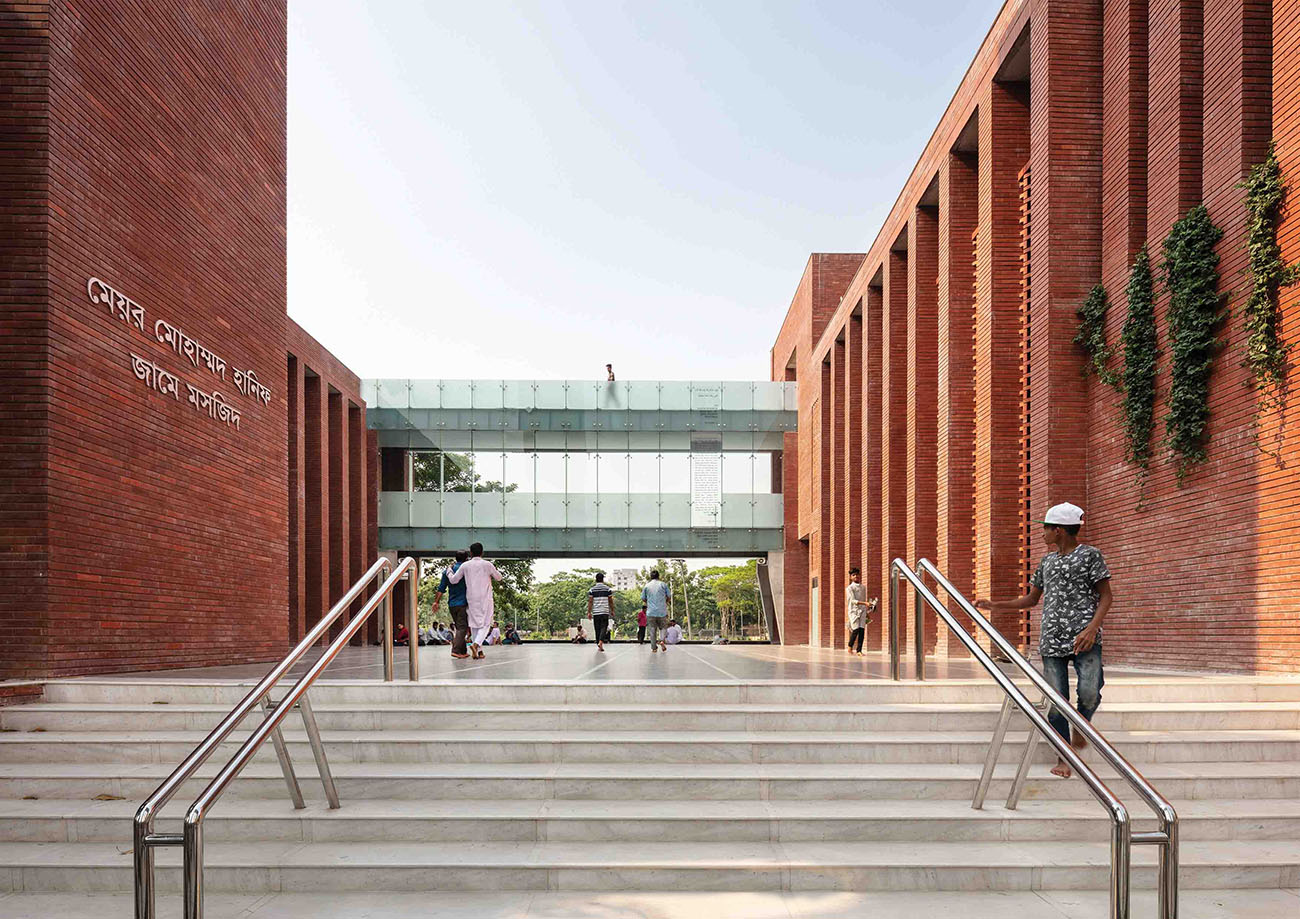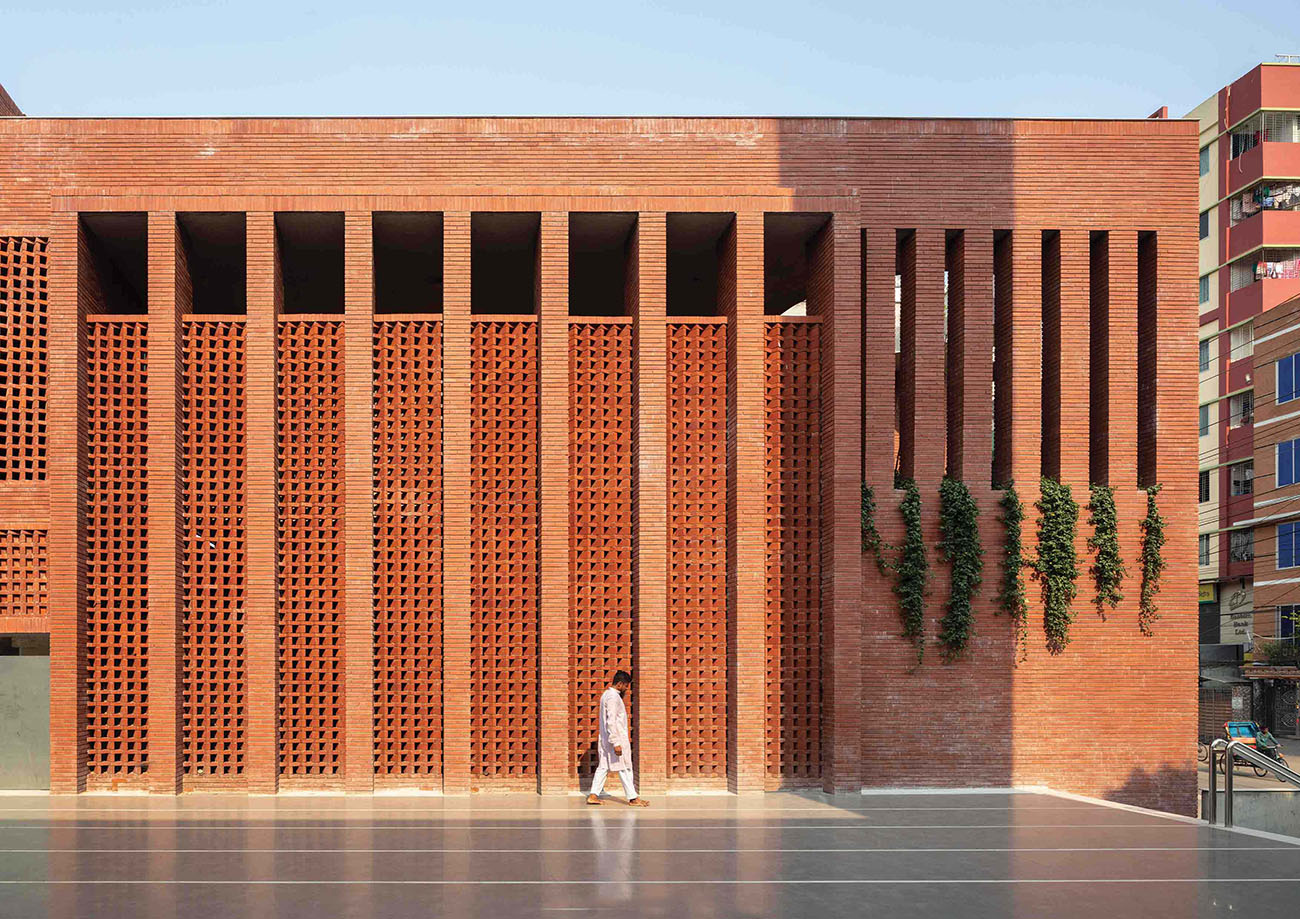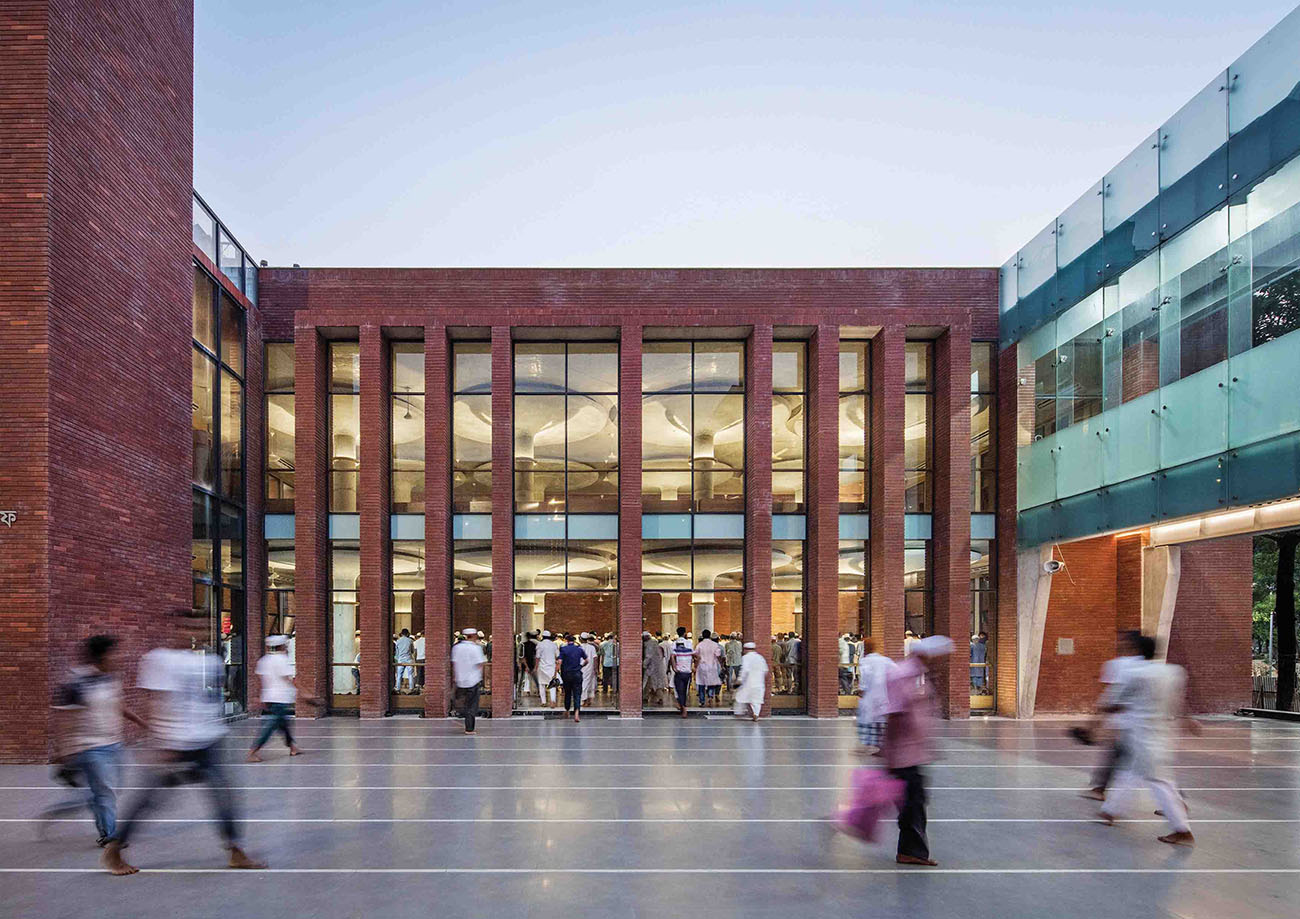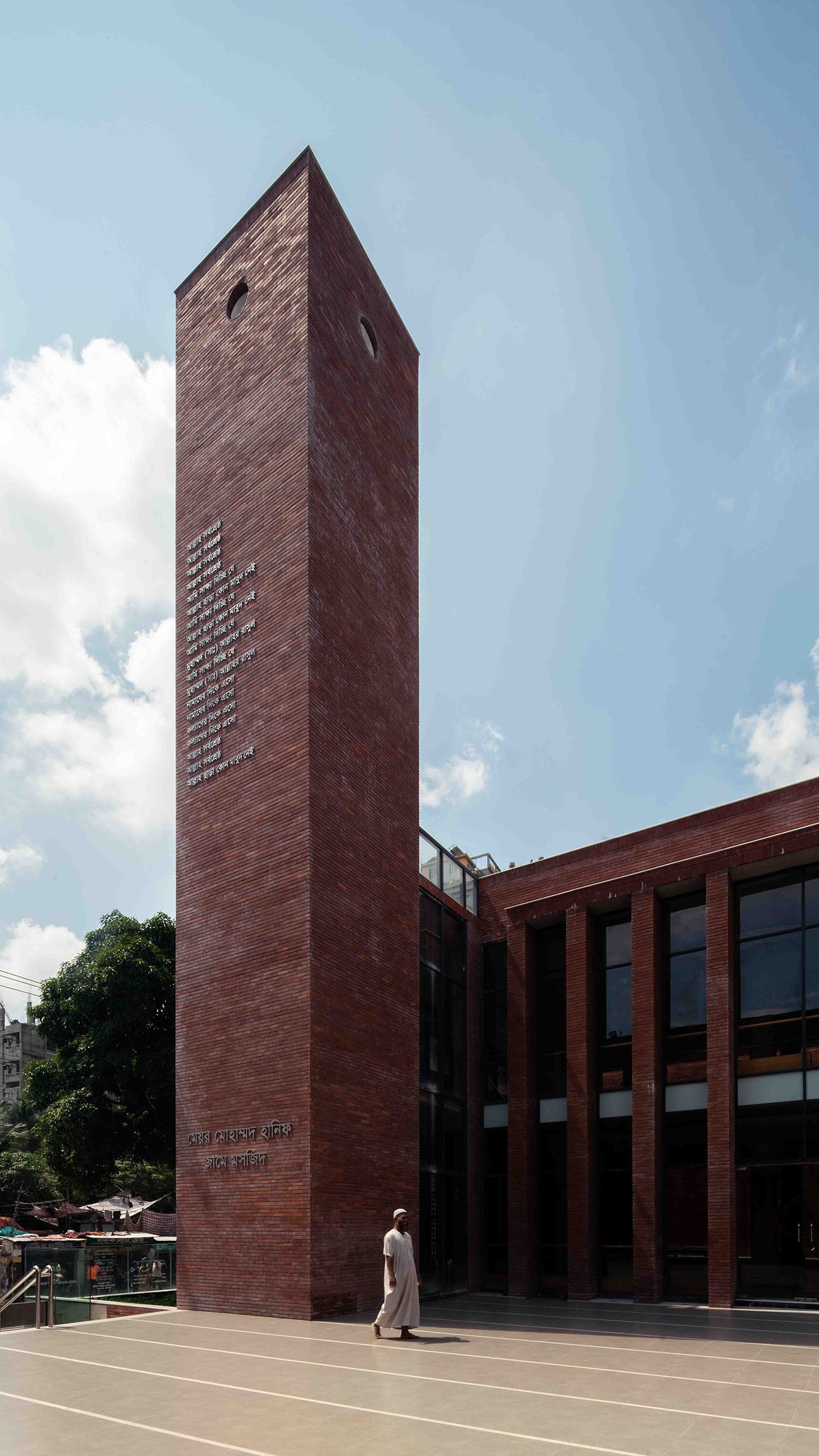Beyond the Divine – Mayor Mohammad Hanif Jame Mosque
The Mayor Mohammad Hanif Jame Mosque is a public project of Dhaka South City Corporation locating adjacent to the 200 years old Azimpur graveyard. Designed by Shatotto, the concept of the mosque was to create a transparent window between the two lives – the earthly materialistic life and the celestial life once our soul leaves the body.
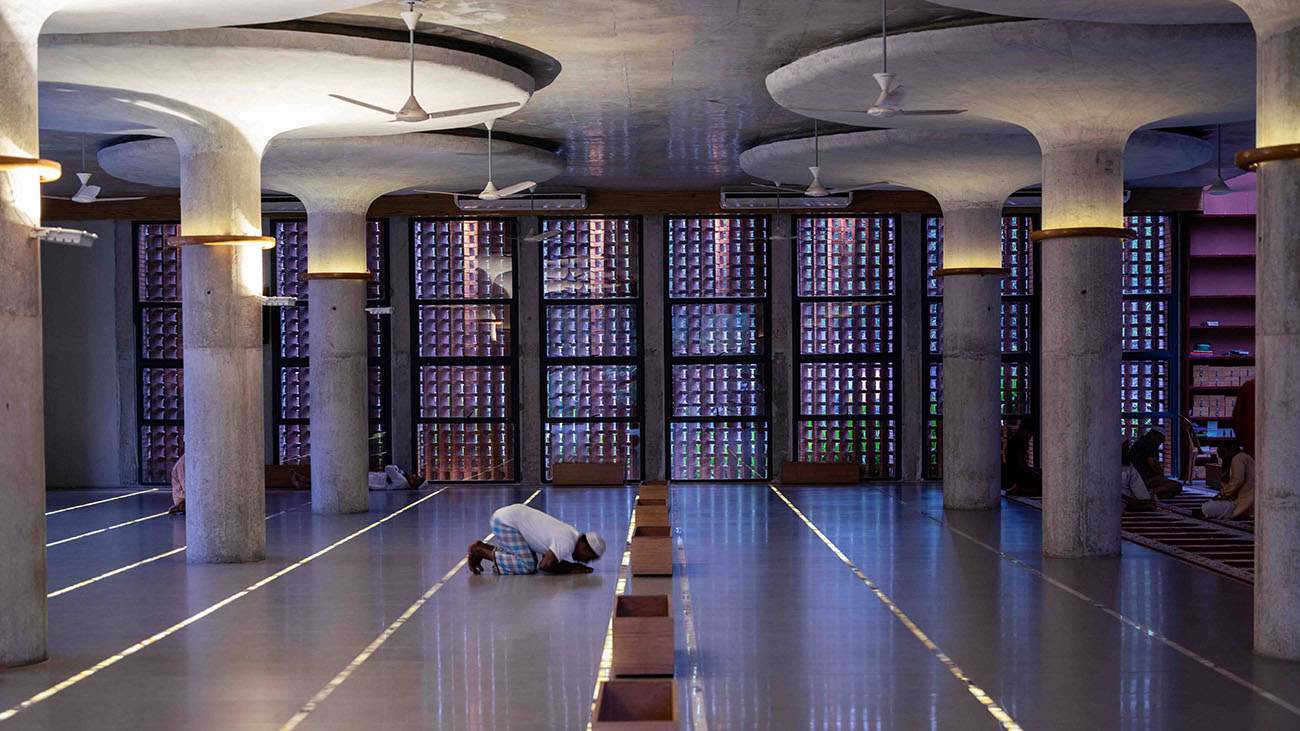
The users of the mosque are the people of the local community and the people who come to bury or visit their loved ones. The main goal of the project was to connect the celestial and terrestrial phases of life in a systematic and poetic order. The mosque acts like a window which provides a view of both the celestial and terrestrial life. The street on the south overviews the busy life of the living, on contrast the north side gives a glimpse of the resting place of the dead.
As construction materials, cast R.C.C, steel, glass, and brick as cladding materials have been used.
As a structural system, a mushroom column of concrete has been used in the main prayer hall of the mosque. This gives beam free flat slab lightly held by the mushrooms. The glazed concrete of roof and non-glazed concrete of the canopy like pillar has been used intentionally to create the reflection of light in the prayer hall.
The floor of the prayer hall has been lighted up by using a special type of stone. The mehrab has been made of frosted glass to allow the celestial light to reflect on it.
A key feature derived from the Mughal mosque in Dhaka is ‘shaan’ – a type of extended open to sky terrace attached to the entrance of the main hall. The shaan implemented in this mosque serves additional 500 devotees particularly gatherings on Friday (Jummah holiday) or any other special occasions. Apart from the occasions, the shaan acts as a social hub for the local community. The north bridge connecting the upper levels of the main buildings runs parallel to the graveyard, creating a cinematographic frame of the departed soul and life. The south wall of the bridge is made of partly frosted glass upon which a ‘surah’ (prayer) is written, while the northern side is more open to providing an unobstructed view of the graveyard. “The prayer written on the south glass talks about the inevitable crossing of the proverbial bridge, making the crossing of the bridge more than just a method of moving the body around the mosque, but also a means of moving our spirits,” explains Rafiq Azam, principal architect of Shatotto.
The window on the south looking road has been screened by the brick jali to reduce the temporal connection. Whereas the window on the north connecting the graveyard is clearly open for celestial indulgence. The mehrab or the prayer space for the Imam (the priest) has been designed unconventionally and elaborately. The whole one strip of the mosque facing the west stark brick wall is dedicated to Imam’s prayer space with daylight coming from heaven. The flow is also made of frosted glass which reflects and refracts the light within. The extended space represents the span of their influence but outside of prayer, benches and books are available for anyone to enjoy under the skylight. The western wall is also plain, touting nothing but the stark red brick. It is made of as an abstract for the deep simplicity of the mosque.
The building at the east of the bridge contains women’s prayer space and management team’s quarters on the upper floors with ablution space on the ground floor. The ablution space combines traditional and contemporary designs to provide devotees with the best of both worlds. Moving back around to the south-west corner of the mosque, the minaret features a modern rectangular design. Traditionally, a Muezzin, the person who calls devotees for prayer, would climb up atop the minaret, but in this mosque, it has speakers built into the top allowing the Muezzin to conveniently use a microphone from below. This method freed up the space within the tower allowing it to be used as an elevator shaft for those who may need it. This design choice allows the minaret to still retain its traditional role while simultaneously giving it a new functionality to improve convenience and accessibility.
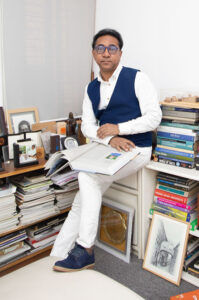
Architect Profile
Rafiq Azam is the Principal Architect of Shattoto, an architecture firm based in Dhaka with a focus on ‘architecture for green living’. Formed in 1995, Shatotto intends to unearth the lost history and heritage of Bengal and recreate the missing link of its urban and rural culture. He graduated in 1989 from Bangladesh Engineering University (BUET), Dhaka. His many awards in both art and architectural work include three-time recipient of World Architecture Community Award 2008-09, Emerging Architect of the world by Urban Land USA, etc.
Photography by Mike Kelley, Will Scott


